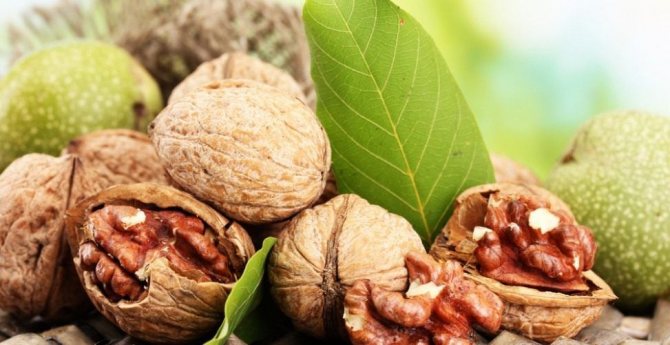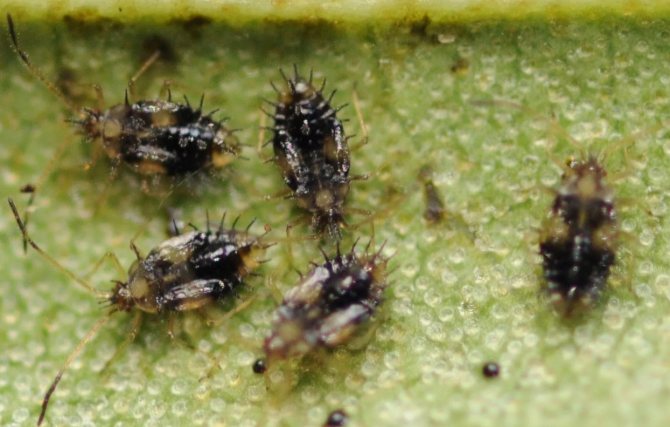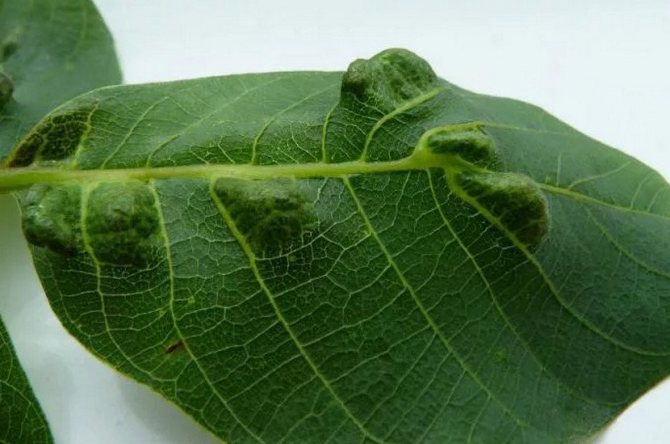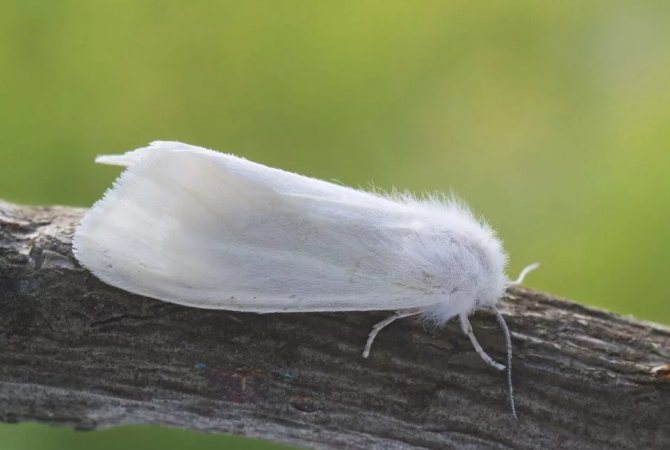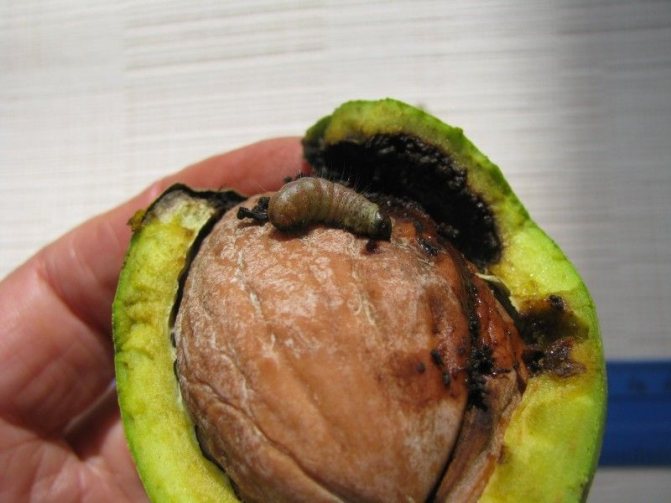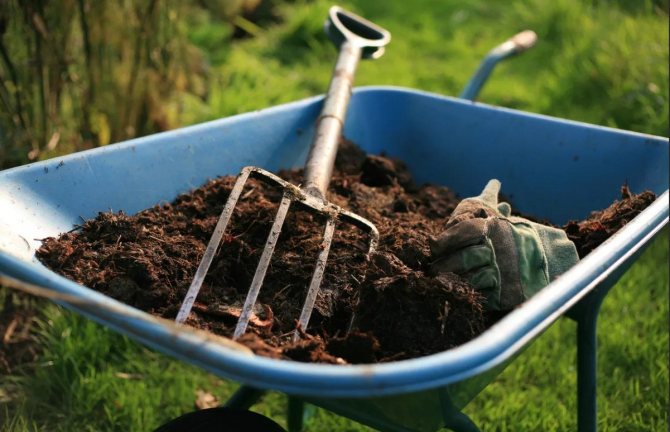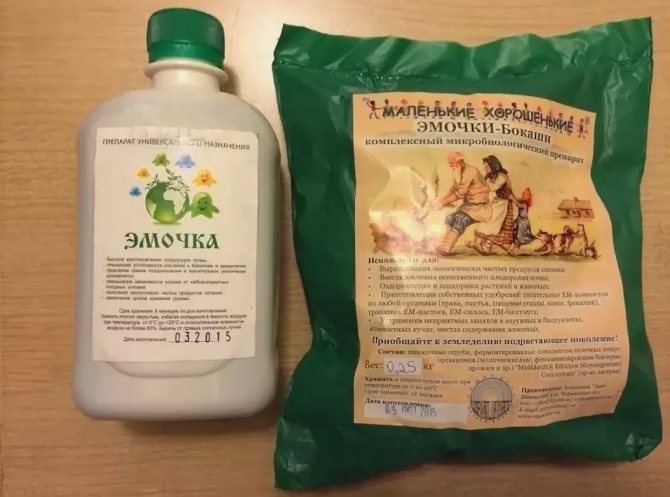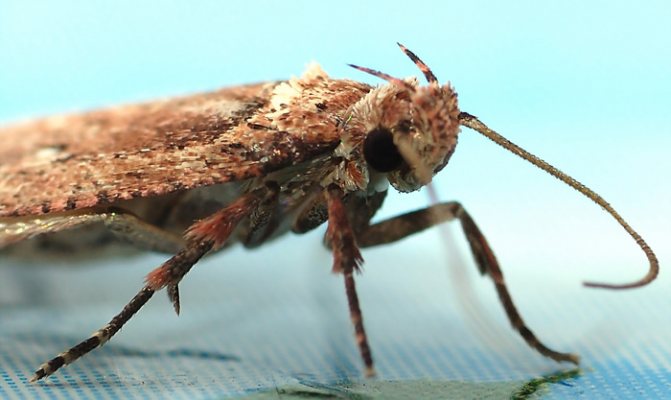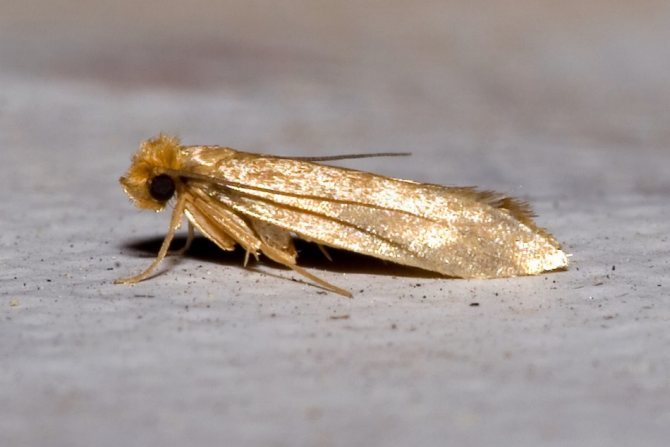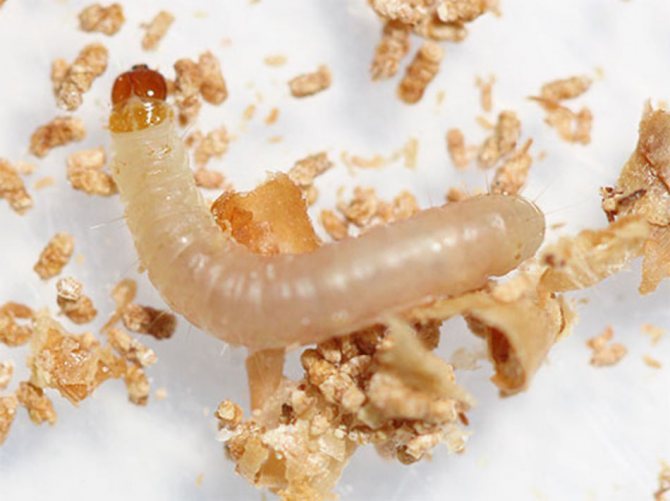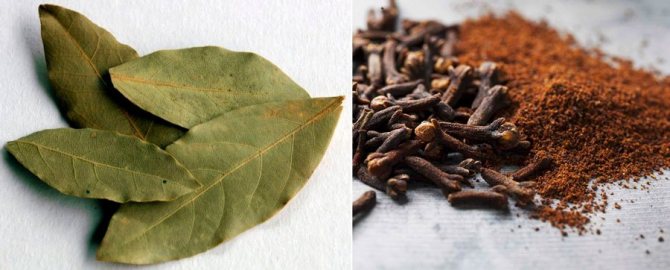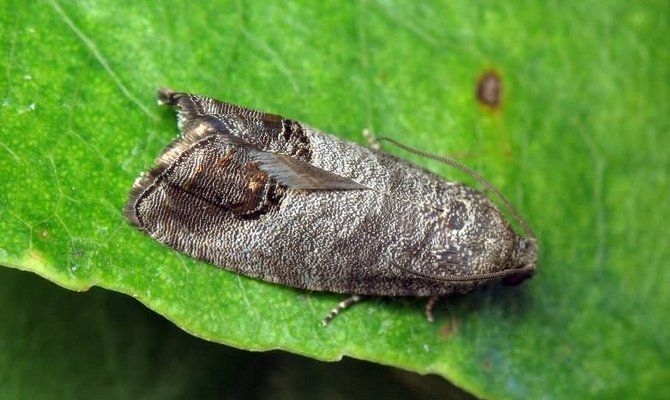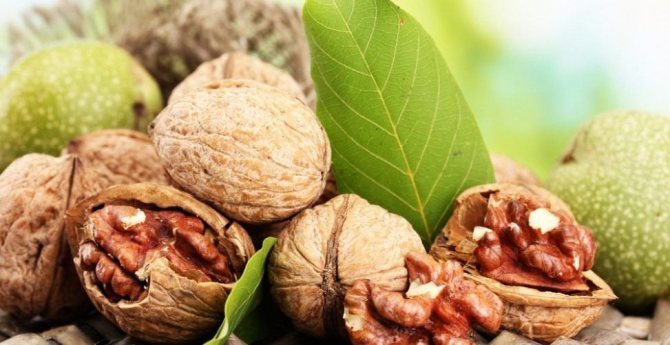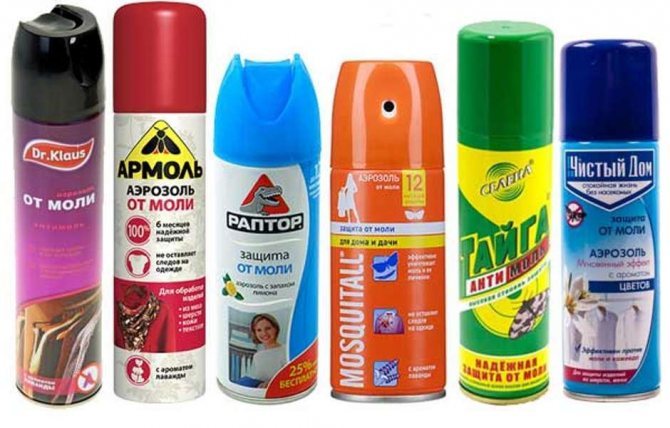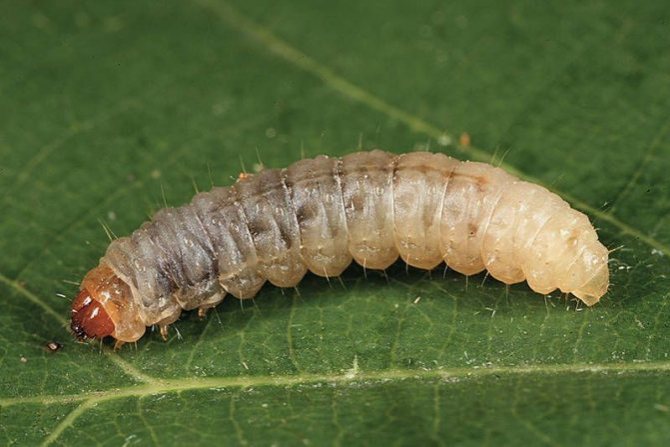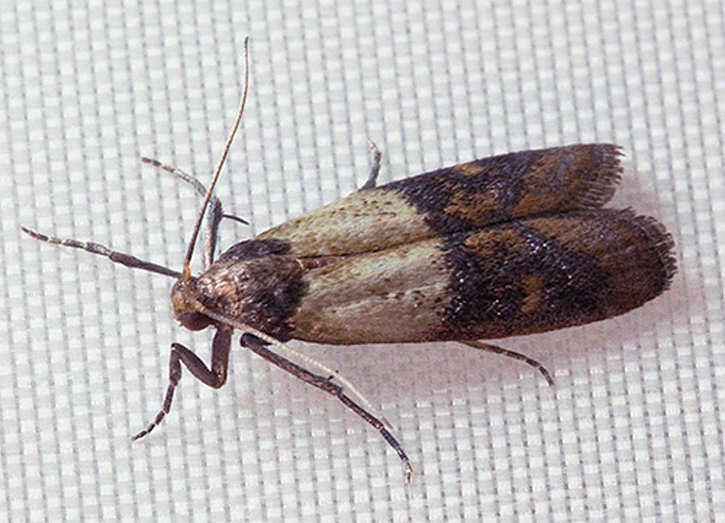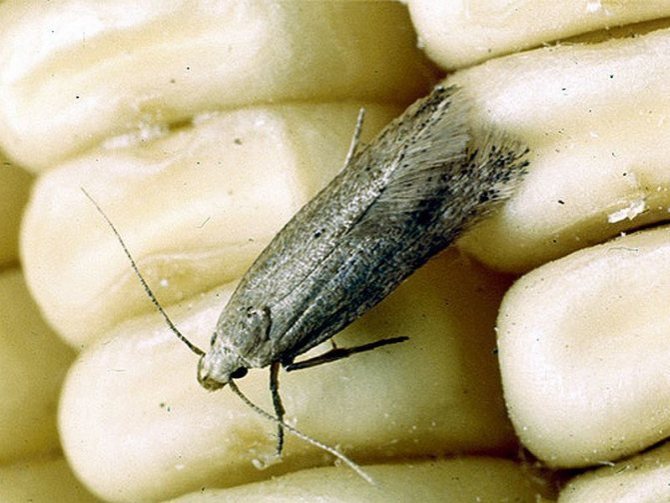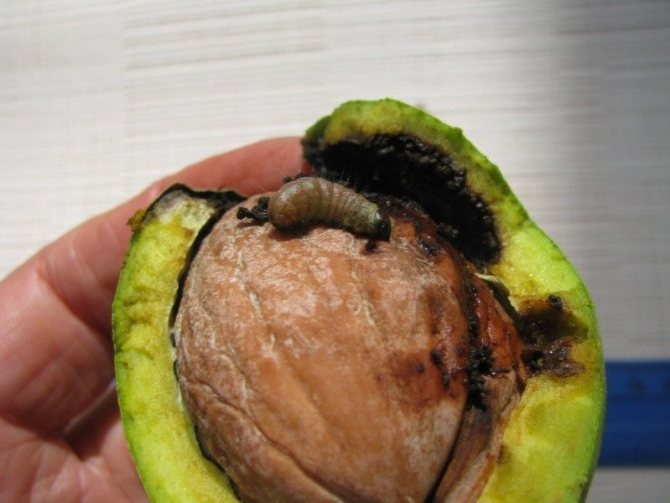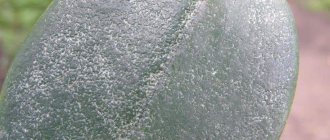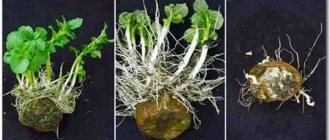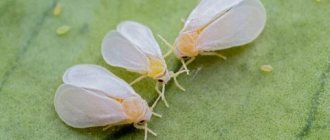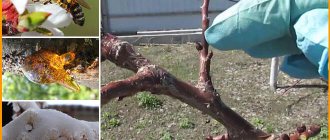Various types of moths or moths have firmly chosen human housing as a source of heat and food.
Depending on the species, these insects may prefer natural fabrics or food.... The appearance of pests is especially common in cereals, nuts, legumes, and other food products.
If moths have been found in walnuts, it is important to take immediate action to eliminate parasites, otherwise there is a high risk of contamination of all groceries.
There are no universal ways to combat food moths, larvae and adults can withstand low temperatures perfectly, and the use of insecticidal agents is fraught with food spoilage. Let us consider in more detail what can be done when moth larvae are found in nuts, and how to get rid of such an unpleasant neighborhood.
What beetles are found in the kitchen and how do they get there?
It is not enough to find that bugs have started up in flour and cereals, damaging products at lightning speed. To find effective pest control products, you need to clearly know what species they belong to. There are several main types of bugs that damage bulk products:
- bread grinder;
- flour bug;
- red flour eater;
- food moth.
Bread grinders - miniature light brown bugs that can fly, most often settle in cereals, enjoy baked goods, old medicinal herbs, as well as tea and coffee with great pleasure. They enter the apartment with contaminated store products, as well as animal feed.
Flour bugs settle in flour more often than in any other products, they can often be found in packages with starch. Insects simply sneak into boxes in the kitchen with loose products, including packs of rye, rice flour, rolled oats and semolina. Uncommon, but you can see pests in dried fruits, rice or buckwheat.
A feature of insects is the ability to reproduce quickly. Egg-laying female beetles mask in the cracks of furniture in the kitchen, in cereals, flour, on the shelves of cabinets. A new generation of pests is rapidly spreading around the home looking for food sources.
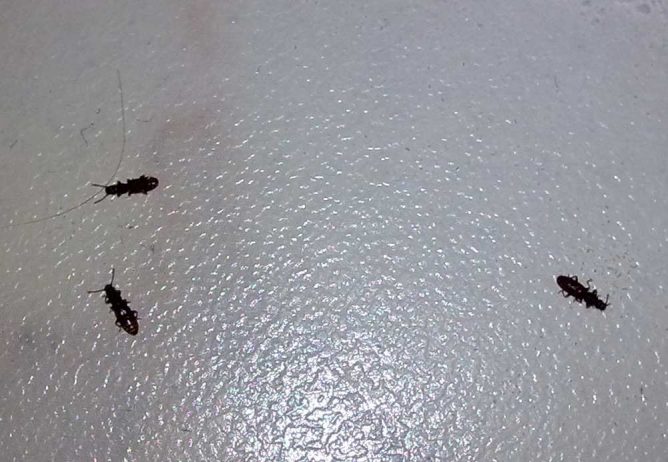
Red ordinary mucoed in length no more than 2.5 mm. Most often it enters the room together with poor-quality animal feed. The pest's favorite food is cereals, grain, flour with an expired shelf life and a moisture content of no more than 15%. In order for the ginger flour eater to stop spoiling food and multiplying in the kitchen, it is enough to block access to food sources.
Food moth starts up in buckwheat, oatmeal, semolina, rice, flour, A mature specimen visually resembles a silver butterfly, reaches a length of 10 cm. open windows.
In addition to the fact that insects find their stay in semolina, millet and other cereals, in some cases tea and cocoa, dried fruits, and pasta are also infected.
It is not difficult to identify pests in food - they leave behind a thin web, woven from small yellow worms.
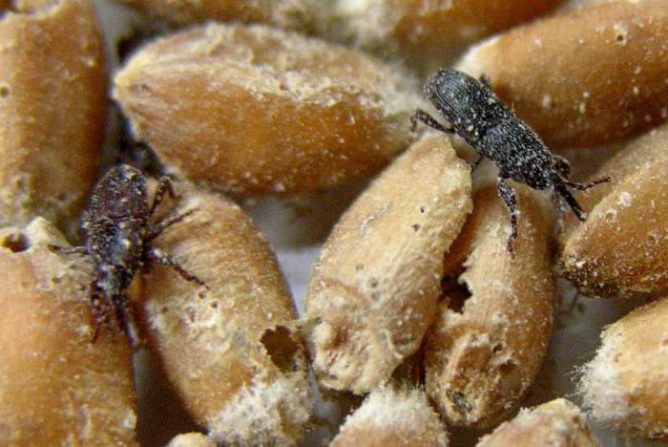

Effective measures
To get rid of a butterfly, you need to know its biology. The mechanical method of dealing with an unsightly pest does not give the expected effect.Caterpillars keep evolving as you try to kill the pest with a slipper.
To save the nuts, you will have to destroy:
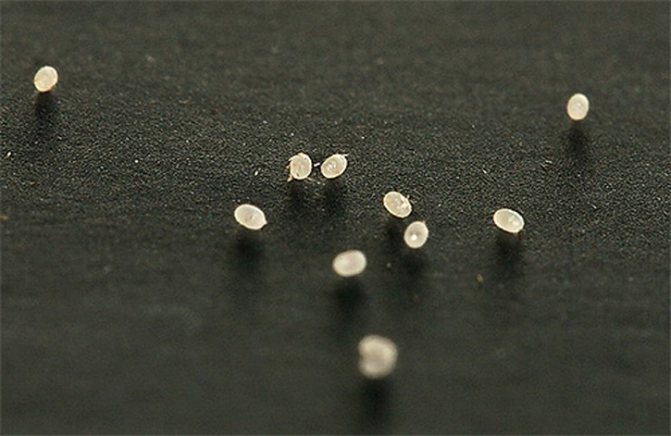

The moth eggs are very small, their size does not exceed 0.5 mm. It is practically impossible to find them.
There is no seasonality, the parasite can appear indoors at any time.
You should start by fighting the larvae. They are the ones who spoil the nuts. For this, products are sorted out and those that have become unusable are thrown away. You can find out about popular folk ways to deal with food moths by reading the corresponding article on our website.
Getting rid of butterflies should be done mechanically. Just press down on them or install adhesive tapes.
Prevention measures: how to prevent infection?
So that insects in cereals do not complicate life, requiring a series of operations to destroy them, you can follow simple recommendations regarding the prevention of their appearance. These include:
- Warming up purchased cereals in the oven at low temperature for half an hour.
- Freezing bulk in the freezer during the day (using a dry ventilated package).
- Dried fruits are treated with boiling water, followed by washing and storage exclusively in the refrigerator.
- Thorough inspection of purchased products (including vacuum packaging) with the disposal of cereals and flour with signs of contamination.
Bulk should be stored in perforated polyethylene or glass sealed containers. Alternatively, metal boxes, ecological bags made of natural linen are suitable.
One of the reasons why bugs start in flour and cereals is non-observance of the shelf life of products. In order to avoid creating favorable conditions for pests, it is worth buying cereals and other bulk products, as well as dried fruits, coffee and tea with a minimum supply.


It is believed that rice, semolina, flour and buckwheat can be stored for no more than six months, oatmeal and millet are stored for no more than 4 months due to the high fat content.
The record holder in terms of shelf life is polished rice. Many varieties, after several years of storage, become even better, acquiring additional flavoring qualities.
If, nevertheless, contamination of food in the kitchen could not be avoided, there are several ways to get rid of bugs in cereals, flour and spices.
Where do bugs in cereals and larvae come from?
In most cases, the insect or its larva comes in together with poor quality cereals purchased by weight. However, it is not uncommon for beetle eggs to be found in vacuum packages, if we are talking about unscrupulous producers who violate the sanitary regime for storing cereals in factories and warehouses.
Infection can occur in recently purchased cereals due to the wrong neighborhood, when prunes, pasta, flour, tea, coffee, spices are stored nearby.
Disposal is a simple and reliable method
When there is neither the desire nor the opportunity to fight the growing population of harmful insects in bulk products in the kitchen, it is worth moving to a radical method - the disposal of damaged cereals.
Packages, bags, containers with bugs are carefully packed in sealed cellophane and taken out of the house.
Places where contaminated products were stored (shelves, cabinets, mezzanines) are thoroughly treated with soda, vinegar or chlorine solution, followed by rinsing with clean water.
Thermal fight - what effect does it have?
If bugs are in the croup, you can try to remove them by raising the temperature to +50 degrees Celsius. We are talking about the treatment of containers with pests with boiling water or steam. The method is especially effective for removing pests in hard-to-reach places.
To free cereals and other loose insects, you can dry them in the oven at temperatures up to 70 degrees for half an hour, or achieve a result by placing contaminated foods in the freezer. Most bugs die at -15 degrees Celsius.
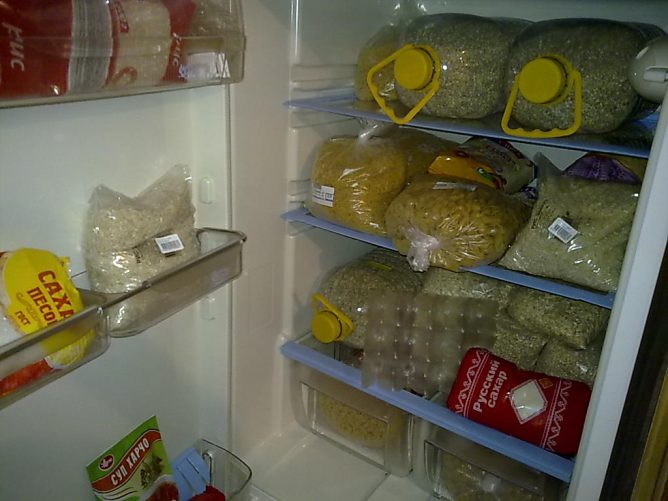

After destroying the larvae and bugs from the kitchen cabinet, shelves, it is important not to forget to process the surfaces, as well as all available cereals, nuts, beans. As a result of this treatment, it will be possible to get rid of the remaining insects, which will simply float to the surface. However, given that products infected with insects are unsuitable for consumption, it is easier to get rid of them by renewing supplies with fresh cereals and flour.
Moth damage
The butterfly itself does not harm the walnut. She lays eggs in the bag, but does not feed on them. When the larvae hatch to the surface, they contaminate the surface of the shell with feces, chitinous particles. If the fruit is in the shell, then you can save it.
If they are kept clean, they will most likely have to be disposed of. The insect infects food at any time of the year.
Foods spoiled by moths can harm the human body:
- intoxication;
- poisoning;
- decreased immunity.
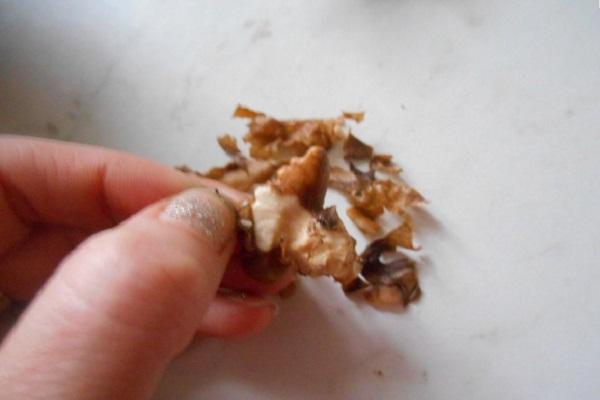

Pest control chemicals
If bugs start in the croup, what to do when the previous methods do not give the desired effect? In such cases, it makes sense to use chemicals. The active drugs are "Karbaphos" and "Antizhuk". The second one has a universal effect, it helps to cope not only with kitchen bugs, but also with wood bugs that damage furniture, windows, laminate and parquet. It is necessary to use the drug with extreme caution, following the instructions.
Another pest control Rogneda is a powerful antiseptic that allows you to dispose of a range of domestic insects, including mucoids, weevils, cockroaches and ants.
You can also remove bugs in the kitchen using the drug "Lovin Fire Protection", which allows you to achieve a quick effect. The product has a high level of toxicity, it is used in the absence of animals and children at home.
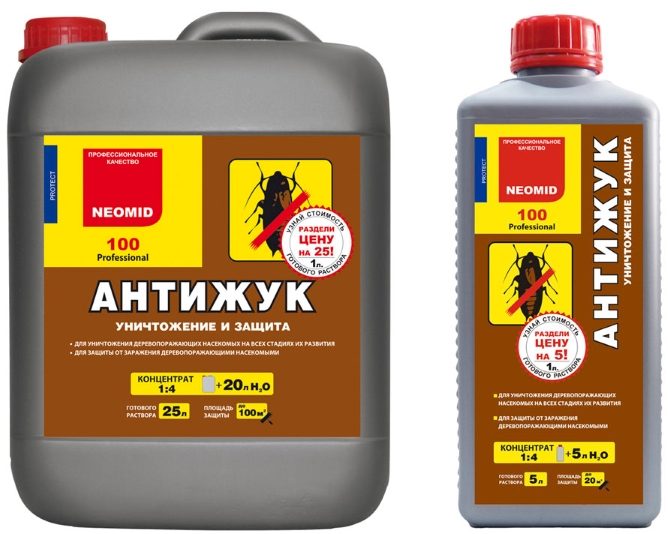

Working folk methods: which ones to choose?
For those who consider chemical preparations too dangerous, disposal and destruction of insects by lowering or increasing temperatures are not so effective, it is worth trying to solve the problem with the help of folk remedies. Recipes for some of them are below:
- Table vinegar. All surfaces infected with a bug are treated with an aqueous solution based on vinegar, with the accompanying disposal of cereals and flour damaged by pests.
- Bay leaf, pepper, garlic, sulfur. All these are products, the smell of which is afraid not only of flour bugs, but other types of insects.
- Antiseptics of natural origin - chamomile or calendula are also able to scare away pests.
An interesting option that allows, if not forever, then for a long time to forget what bugs in cereals are - a trap based on boric acid.
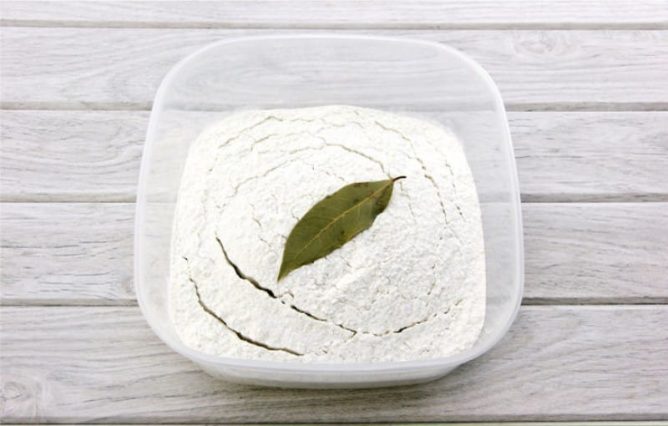

The bait works according to a simple principle: an insect is attracted by the bait. Hungry insects taste the poisoned delicacy, become infected with toxins and poison the rest of the colony.
To prepare the bait, boric acid is mixed in a container with powdered sugar, semolina, honey, syrup. The treat will attract pests only when fresh. It is recommended to use traps in the absence of children and pets at home, placing them in the habitat of insects.
Leaf diseases
As a result of improper care or the influence of external natural factors, the culture in question may be affected by:
- white spot;
- brown spot;
- bacterial burn.


In order to identify the problem in time, you should often inspect the foliage of the tree. Most often, the first symptoms of the disease are manifested by deformation or discoloration of the leaves.It is important to understand that the sooner the disease is identified and the fight against it begins, the more chances are to save the plant and completely solve the problem.
White spot
The main reason why white spotting can appear is high humidity combined with a decrease in temperature. A parasitic fungus of the genus Microstroma causes the disease. Plants in dense plantings are more susceptible to disease than single specimens.
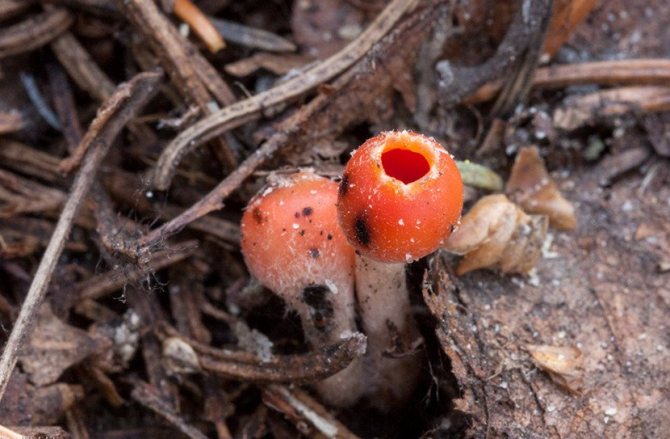

When affected by white spotting, spots of a light green hue begin to appear on the inner side of the leaf blades. A little later, a white bloom forms in these places - these are fungal spores. When the wind blows or rain, they spread to neighboring plants, and also fall into the ground, where they settle in the upper layer and can function for a long time if the soil is not taken care of (loosening, fertilization, disinfection, mulching).
Having found the first symptoms of the disease, pruning should be carried out immediately. To do this, use a pruner or a hacksaw; the instrument is preliminarily disinfected in alcohol. The cut is made 5 cm further from the lesion site, capturing healthy areas. Immediately after that, the sections are powdered with wood ash and covered with garden pitch. Then the plant is treated on the leaf and trunk with Bordeaux liquid. It will be necessary to prepare a 1% concentrate - 100 g of a substance for 10 liters of water.
Important! The near-trunk circle is equal to the diameter of the crown projection.
The liquid is placed in a tank with a spray bottle and treated with it. You should also process the trunk circle. After spraying the soil under the tree, it is necessary to loosen it after 5 hours and then mulch it. If the soil layer under the tree is too wet, remove the top 5 cm and replace them with a mixture of peat and sand (1: 1 ratio). Processing on the leaf and trunk with Bordeaux liquid is carried out 3 times. The interval between spraying is 10 days.
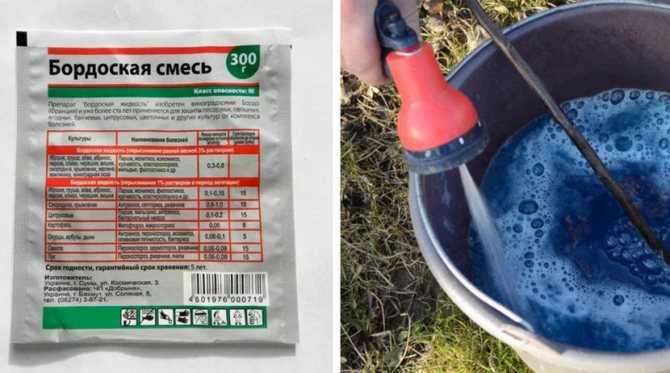

In order to avoid relapses, in the future, before budding, it is imperative to treat with a 3% Bordeaux liquid concentrate. During the summer, if there is a decrease in temperature and long rainy periods, spraying with a 1% solution of Bordeaux liquid is carried out. You can also use wood ash: it is sprayed dry directly on wet sheets and soil.
At the end of the season, it is imperative to harvest all the foliage, collect all fallen fruits. After that, you need to inspect all the branches and remove those that have been damaged by diseases, pests, or mechanically. Then process the sections and spray with copper sulfate of 3% concentration.
Learn more about how to vaccinate a walnut.
Brown spot
The disease in question also belongs to fungal. It progresses with increasing humidity combined with rising temperatures.


The main reasons for the spread:
- prolonged rainy period in early summer;
- improper care - overflow, neglect of soil maintenance (loosening, mulching), lack of high-quality foliage harvesting at the end of the season, etc.
The disease affects young leaves, shoots and developing fruits. If you do not take action right away, you can lose up to 50% of the crop. The first manifestations of the disease are noted in May. On the back and outside of the leaves, rounded small spots with a brown tint are formed. Gradually, the foci begin to grow. Ultimately, they merge, the leaves lose intracellular pressure, dry out and fall off.
Important! Wear gloves and a respirator when handling copper-containing products. If liquid comes into contact with skin, immediately flush the area with plenty of water to avoid chemical burns.
Brown spots also appear on the shoots. If untreated, the fungus begins to spread to the fruit - red-brown depressed areas appear on them.Over time, they grow, merge, the core blackens and rots. Infected fruits develop poorly, most of them crumble at an early stage of infection.
Treatment consists of three times treatment with a 1% solution of Bordeaux liquid or any other copper-based fungicide. The interval between spraying is 10-15 days. First, it is necessary to remove all infected parts of the plant, collect fallen leaves and fruits. All this should be disposed of by incineration outside the site.


You also need to monitor soil moisture. When the first symptoms are found, it must be loosened immediately. If necessary, you can replace the top layer with a mixture of peat and sand, as in the elimination of white spot.
As a preventive measure, if there have already been manifestations of the disease, it is necessary to treat with a 3% solution of copper-containing preparations before bud break and after harvesting. It is imperative to remove all plant residues from the site at the end of the season. In the middle of summer, you can carry out the treatment with fungicides with copper 3 times with an interval of 10-15 days.



